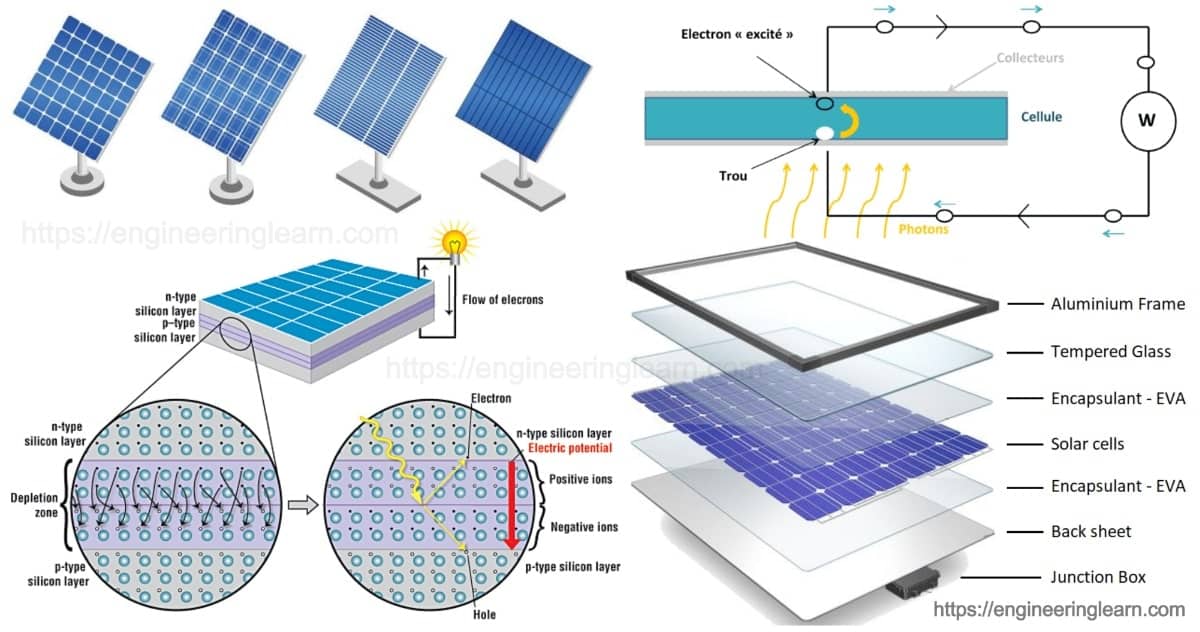The Main Principles Of Solar Systems
Table of ContentsAll about Solar SystemsAn Unbiased View of Solar SystemsThe Facts About Solar Systems RevealedSome Of Solar Systems
There are 3 different sorts of photovoltaic panels: monocrystalline, polycrystalline, as well as thin movie. Monocrystalline photovoltaic panels are highly efficient and also have a streamlined layout, yet come at a higher rate factor than other photovoltaic panels. Polycrystalline solar panels are less expensive than monocrystalline panels, however, they are less reliable as well as aren't as visually pleasing.Nowadays, there are several varieties of monocrystalline solar panels on the marketplace to choose from. Passivated Emitter as well as Rear Call cells, more frequently described as PERC cells, are ending up being an increasingly popular monocrystalline choice. PERC cells go through a various production as well as setting up procedure that boosts the quantity of electricity the cells can produce.
Due to the fact that monocrystalline solar cells are constructed from a solitary crystal of silicon, electrons have the ability to easily flow throughout the cell, boosting general efficiency. Not just do monocrystalline panels have the highest possible performance scores, they usually additionally have the greatest power ability rankings, too. A lot of monocrystalline panels on the marketplace today will have a power output rating of at least 320 watts, but can rise to around 375 watts or higher!.
Since polycrystalline cells consist of numerous silicon cells, the electrons can stagnate as quickly and also consequently, lower the efficiency of the panel. The reduced effectiveness of polycrystalline panels additionally means they often tend to have a reduced power result than monocrystalline panels, usually varying between 240 watts and 300 watts.
See This Report about Solar Systems
4% effectiveness With slim movie cell models. In order to satisfy your energy needs, you would certainly need to mount even more slim film panels over a big location to produce the same quantity of power as crystalline silicon solar panels. This is why thin film solar panels don't really make sense for domestic installments where area is limited.
The temperature level coefficient tells you just how much the power outcome will decrease by for every 1 * C over 25 * C the panel obtains. The basic temperature level coefficient for mono as well as polycrystalline panels typically falls somewhere in between -0. 3% and -0. 5% per * C. Thin film panels on the other hand, are around -0.
Actually, with some thin film panels, it's hard to even see the individual cells within the panel. They also tend to have much less electrical wiring and also busbars, implying there's much less white area. Because they are so inefficient, you would require to cover your whole roofing system in thin movie panels - which might or may not be your design.

Some producers have worked around this with black packing or forming the cells differently, however these aesthetic adjustments can impact both the price and efficiency of the panels. Overall, monocrystalline panels still look sleek, but they're a bit extra noticable than thin movie panels. solar systems. The process in which polycrystalline solar batteries are manufactured creates the cells to have a blue, marbled look.
8 Easy Facts About Solar Systems Described
If you get on a tight budget plan, polycrystalline panels may make more sense for you. We do not recommend thin movie solar panels blog here for property installations - their performance and also longevity don't make the reduced price worth it, and it's unlikely you'll have nearly adequate space to mount the variety of thin movie panels you would require to cover your home power usage.
Because they are made from pure silicon, they can be conveniently determined by their dark black shade. The usage of pure silicon additionally makes monocrystalline panels the most space-efficient as well as longest-lasting amongst all three photovoltaic panel kinds. This comes at a cost a lot of silicon is squandered to produce one monocrystalline cell, sometimes getting to over 50%. solar systems.

Amorphous silicon panels (A-Si) acquire their name from their shapeless nature. Unlike mono-and polycrystalline solar batteries, the silicon is not structured on the molecular level. Generally, an a-Si cell calls for just a portion of the silicon needed to produce common silicon cells. This permits them to have the most affordable production cost, at the cost of efficiency.
Everything about Solar Systems
$0. 32-$0. 65 $1 $1. 50 $0. 70 $1 $0. 60 $0. 70 $0. 50 $0. 60 $0. 43 $0. 50 Note that these figures don't include the price of setup as well as labor. With labor and various other overhanging factors, the total can climb to $2. 50 to $3. 50 per watt.

This indicates view it that thin-film panels can be an excellent option for hotter atmospheres or locations that experience more sunlight throughout the year. The updated International Structure Code of 2012 calls for solar panels to match the fire rating of the roof covering where they are installed. This is to make certain that the components do not accelerate the spread of fires in the event of a fire.